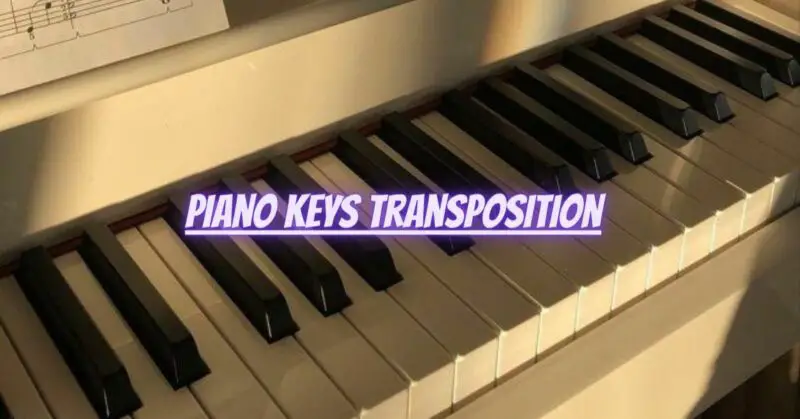Piano keys transposition is a valuable skill that empowers pianists to perform music in different keys without changing the overall structure or pattern of the piece. Transposing music on the piano allows for versatility and adaptability, making it easier to accompany singers or play in ensembles with various instruments. In this article, we will explore the significance of piano keys transposition, understanding the process, and its practical applications for pianists.
1. The Significance of Transposition:
Transposing music on the piano opens up a world of possibilities for pianists. It enables them to play music in keys that suit their vocal range, the preferences of other musicians, or the specific needs of a performance.
2. Process of Transposition:
Transposing music involves shifting the original key of a piece to a new key while preserving the intervals and relationships between the notes. The process requires a deep understanding of music theory and keyboard harmony.
3. Practical Applications:
Transposing music is particularly valuable in accompanying singers. A pianist can adjust the key to suit the singer’s vocal range, ensuring a comfortable and expressive performance.
4. Improvisation and Jam Sessions:
Transposition is also essential in jazz and improvisation settings. Musicians often transpose chord progressions to play in different keys during jam sessions or spontaneous performances.
5. Playing in Ensembles:
In ensembles with various instruments, transposing allows pianists to adapt to the key signatures of other musicians, ensuring a harmonious and cohesive performance.
6. Enhancing Versatility:
Piano keys transposition adds to a pianist’s versatility as a musician. It expands the repertoire of music they can confidently perform, making them more adaptable to diverse musical situations.
7. Mental Flexibility:
Transposing music on the piano develops mental flexibility and sharpens a pianist’s understanding of music theory. It requires quick thinking and an acute ear for pitch relationships.
8. Understanding Music Theory:
Proficiency in transposition is rooted in a solid understanding of music theory, including key signatures, scales, intervals, and chord progressions.
9. Step-by-Step Process:
To transpose music on the piano, a pianist can follow a step-by-step process, involving the identification of the original key, determining the desired key, and moving each note accordingly.
10. Practice and Familiarity:
Transposition is a skill that improves with practice and familiarity. By regularly transposing music in various keys, pianists can refine their abilities and build confidence in their transposing skills.
Conclusion:
Piano keys transposition is a powerful tool that unlocks musical flexibility and expands a pianist’s capabilities. By understanding the process, developing music theory knowledge, and practicing regularly, pianists can confidently transpose music in different keys, enriching their performances and musical collaborations. Embrace the art of transposition, and let it be the key that unlocks new possibilities in your piano playing. As you explore the world of piano keys transposition, discover the freedom and creativity it brings to your musical journey. Happy playing!


